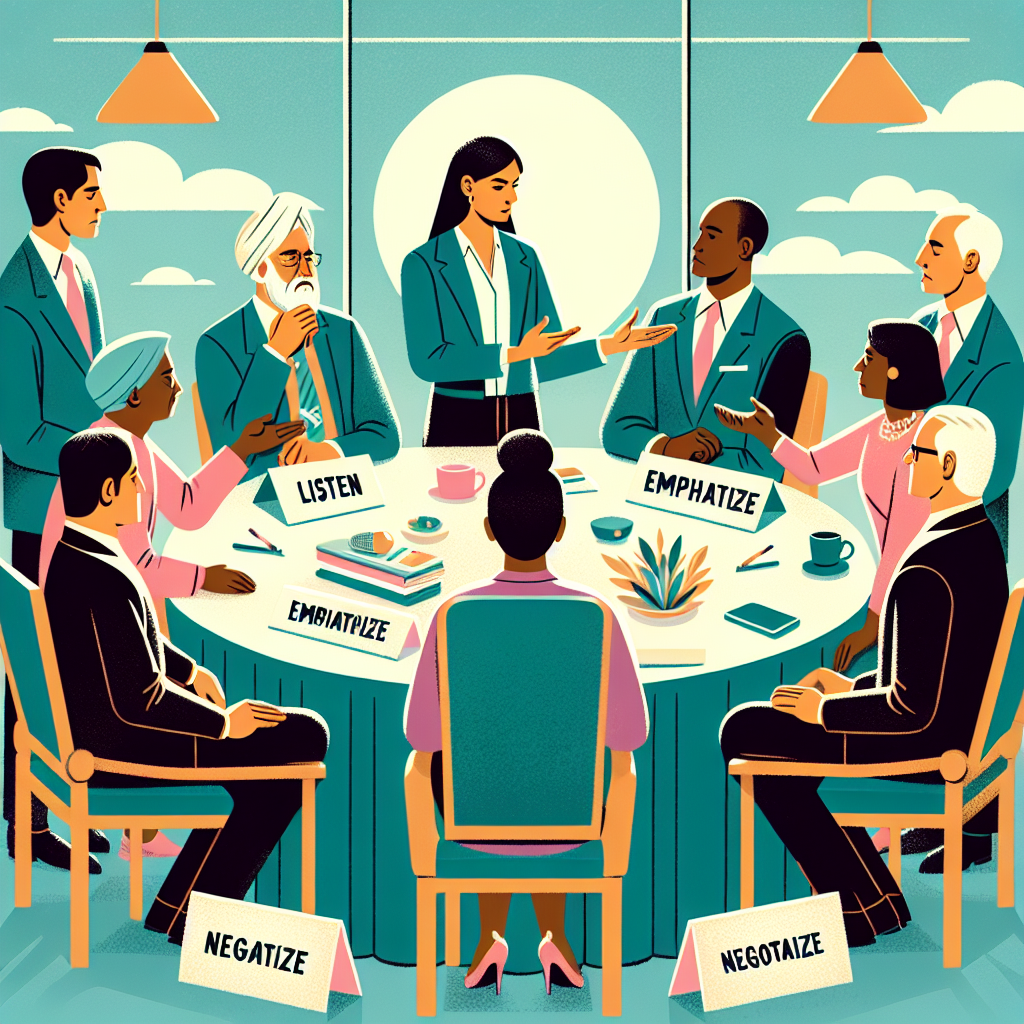Communication Techniques for Conflict Resolution

Mastering Conflict Resolution: Effective Strategies
Introduction
Conflict is an inevitable part of life. Whether it’s in personal relationships, at work, or in social settings, conflicts can arise due to differences in opinions, values, and priorities. However, conflicts don’t always have to be negative. In fact, when managed effectively, conflicts can lead to growth and positive changes.
Understanding Conflict
Before we dive into communication techniques for conflict resolution, it’s important to understand what conflict is. Simply put, conflict is a disagreement or struggle between two or more parties. It can be caused by various factors such as differences in personalities, communication styles, or conflicting goals and needs.
It’s also important to recognize that conflicts can be either overt or covert. Overt conflicts are more visible and involve direct confrontation, while covert conflicts are hidden and may manifest in passive-aggressive behavior.
Importance of Conflict Resolution
Conflict resolution is the process of addressing and resolving conflicts in a healthy and productive manner. It’s a crucial skill to have in both personal and professional settings as it allows individuals and groups to find solutions and move forward instead of getting stuck in a cycle of negativity and resentment.
Effective conflict resolution can also lead to improved relationships, increased trust and respect, and a more positive work or social environment.
Communication as a Key Factor
Communication plays a vital role in conflict resolution. It’s the primary means by which individuals express their thoughts, feelings, and needs. However, it’s not just about what is said, but also how it is said. Effective communication involves both verbal and nonverbal cues, such as body language, tone of voice, and facial expressions.
Poor communication can often be the root cause of conflicts, as misunderstandings and misinterpretations can easily occur. Therefore, improving communication skills is essential for successful conflict resolution.
Active Listening Techniques
A key aspect of effective communication is active listening. This means not only hearing what the other person is saying, but also trying to understand their perspective and feelings. Here are some active listening techniques to improve your communication and resolve conflicts:
- Give your full attention to the person speaking. Avoid distractions and focus on what they are saying.
- Use nonverbal cues, such as nodding and maintaining eye contact, to show that you are listening.
- Reflect and paraphrase what the person is saying to ensure that you understand their perspective.
- Ask open-ended questions to encourage the other person to elaborate and share more.
- Avoid interrupting or jumping to conclusions before the person has finished speaking.
Identifying the Root Cause of Conflict
In order to effectively resolve conflicts, it’s important to identify the root cause. This requires open and honest communication between the parties involved. Often, conflicts arise due to misunderstandings or differences in perspectives. By actively listening and asking questions, you can gain a better understanding of the underlying issues and work towards finding a resolution.
It’s also important to take responsibility for your own actions and behaviors that may have contributed to the conflict. This can help prevent the conflict from escalating and pave the way for a more collaborative and productive resolution.
Collaborative Problem-Solving
In order to reach a mutually beneficial solution, it’s important to approach conflict resolution as a collaborative process. This means involving all parties in the problem-solving and decision-making process.
Collaborative problem-solving involves actively listening to each other’s perspectives and finding solutions that meet the needs and interests of all parties involved. This requires compromise, empathy, and a willingness to find common ground.
The Power of Empathy
Empathy is the ability to understand and share the feelings of others. In conflict resolution, empathy is crucial for building understanding and finding common ground. It allows us to see the situation from the other person’s perspective and find solutions that meet both parties’ needs.
Empathy can also help de-escalate conflicts by showing the other person that you are trying to understand their feelings and point of view. This can lead to a more cooperative and productive resolution instead of a confrontational one.
Managing Emotions in Conflict
Emotions can run high during conflicts, making it difficult to communicate effectively and find solutions. Therefore, it’s important to learn how to manage emotions in conflict and keep them from escalating.
A key step in managing emotions is to recognize and acknowledge them. This can help prevent impulsive reactions and allow you to think more rationally. It’s also important to take a break if needed and come back to the discussion when emotions have calmed down.
Using “I” statements instead of “you” statements can also help manage emotions in conflict. For example, saying “I feel frustrated when you interrupt me” instead of “You always interrupt me” can prevent blame and defensiveness.
Conflict Resolution Strategies for Different Situations
Not all conflicts are the same, and different situations may require different conflict resolution strategies. Here are some techniques that can be applied in different scenarios:
- In a workplace setting, it can be helpful to involve a neutral third party, such as a mediator, to facilitate the resolution process and ensure that both parties are heard.
- In personal relationships, it’s important to validate each other’s feelings and work towards finding a compromise that satisfies both parties’ needs.
- In a group setting, it can be useful to establish ground rules for communication and decision-making to prevent conflicts from arising.
It’s also important to keep in mind that not all conflicts can be resolved. In some cases, it may be necessary to agree to disagree and move on. However, effective communication and conflict resolution skills can still be applied to maintain a positive and respectful relationship.
Conclusion
Communication techniques are essential for resolving conflicts and maintaining healthy relationships. By actively listening, practicing empathy, and collaborating with others, conflicts can be managed and even turned into opportunities for growth and understanding.



